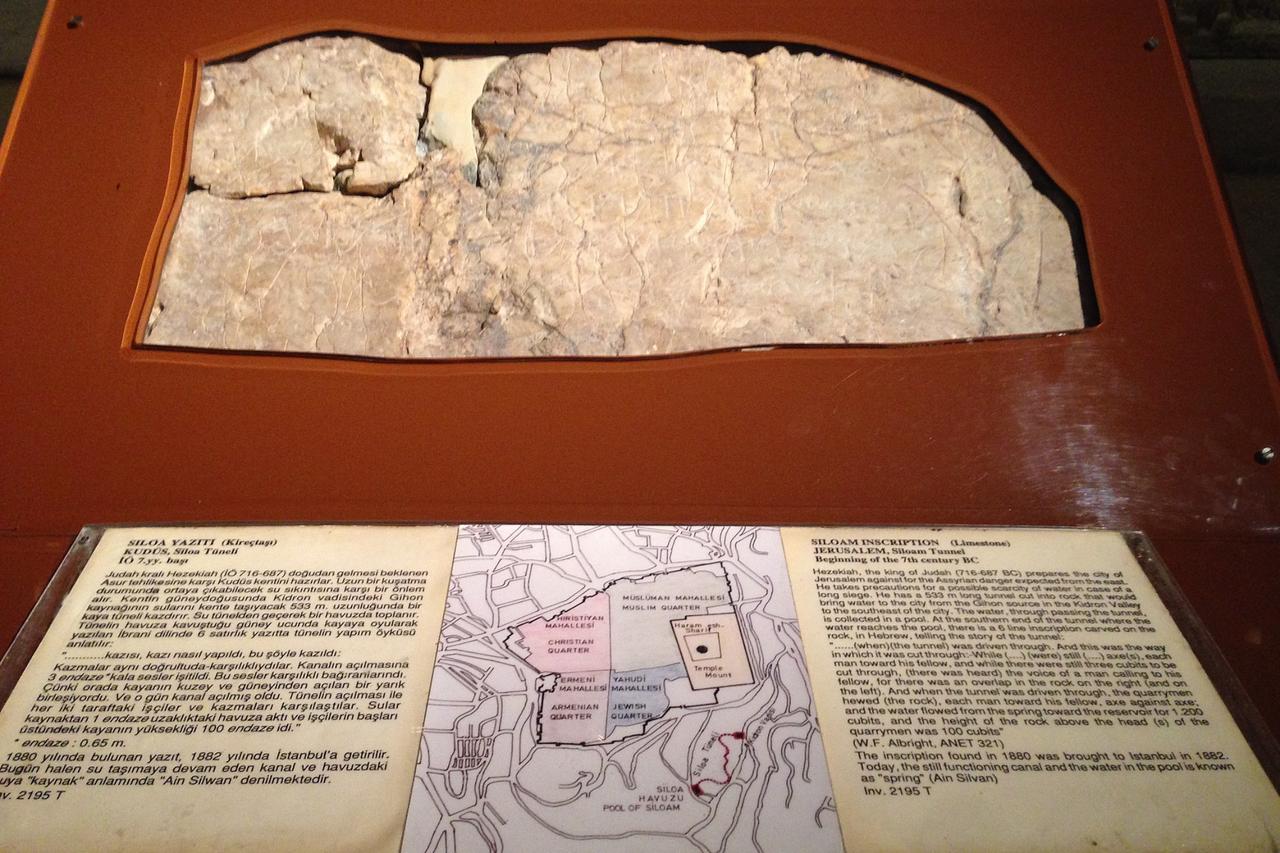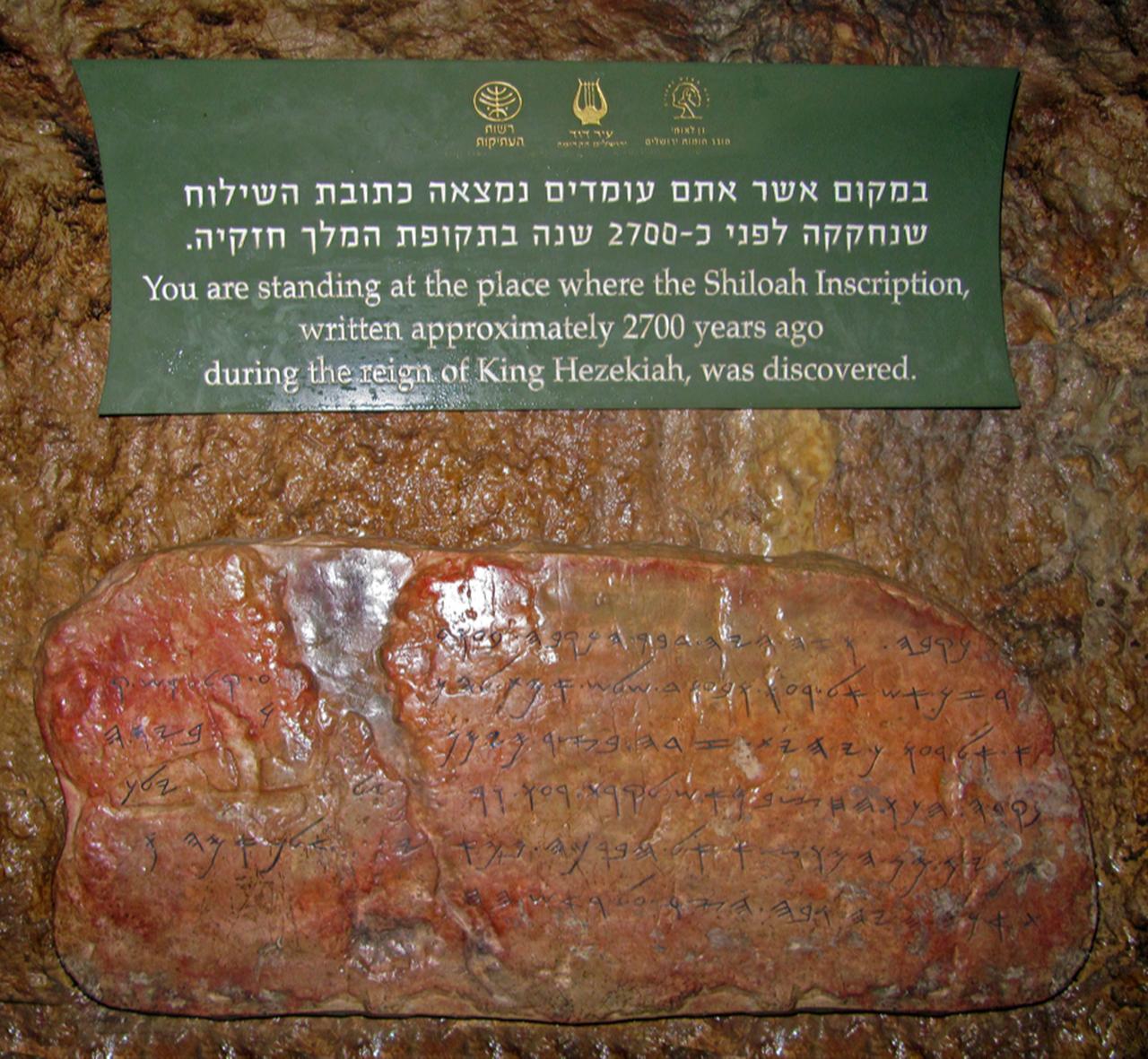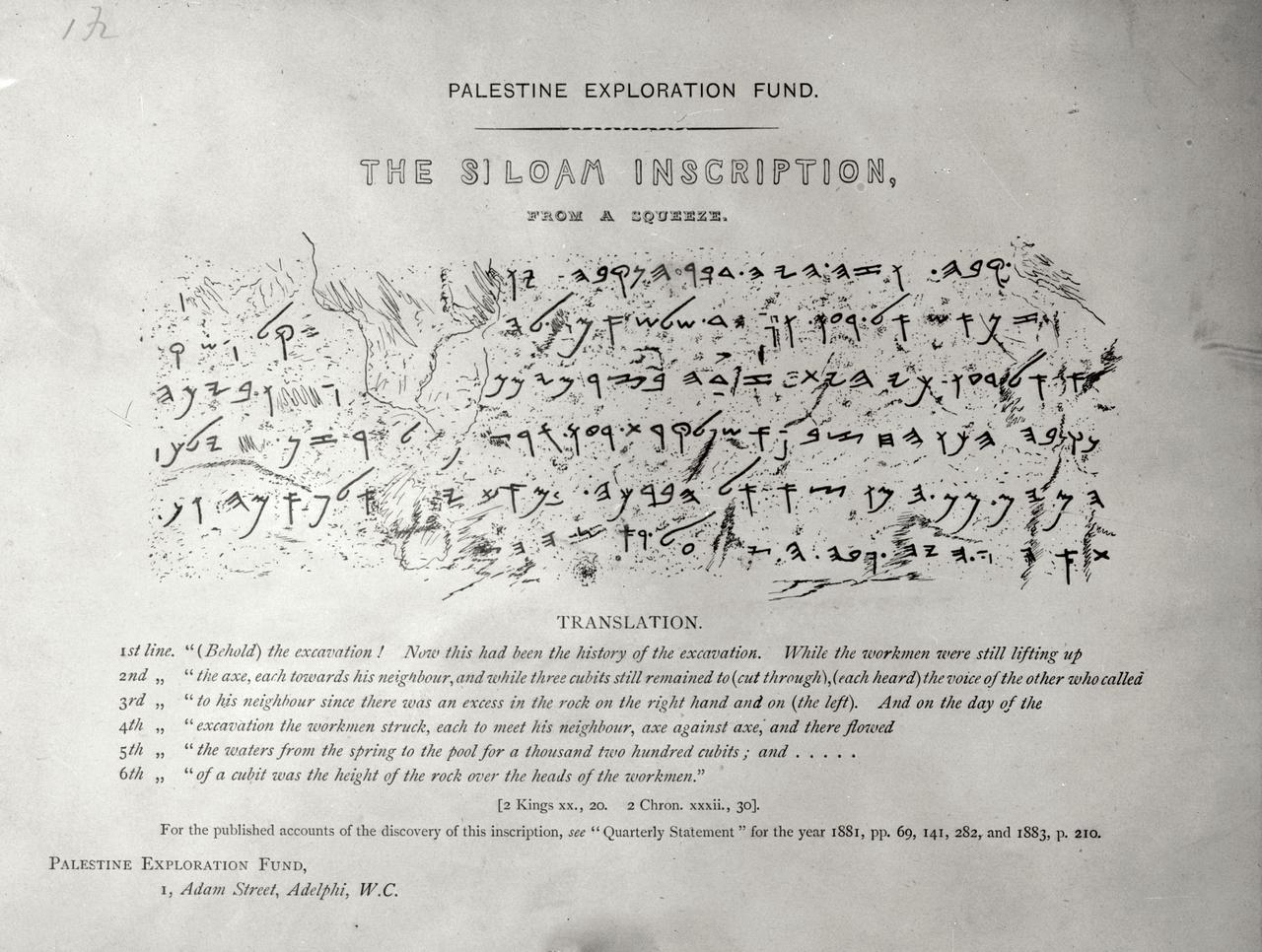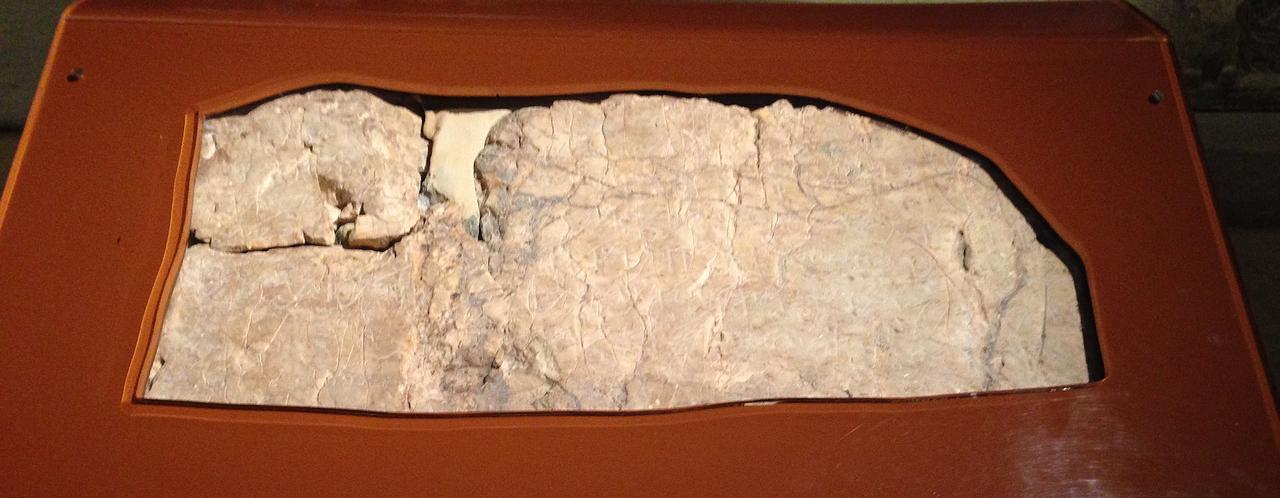Netanyahu repeats push for Siloam Inscription from Türkiye to back Jerusalem claim
The original Siloam Inscription has been on display at the Istanbul Archaeology Museums since it was transferred from Jerusalem in 1882, Istanbul, Türkiye, accessed September 18, 2025. (Photo via Wikimedia Commons)
By Newsroom
September 18, 2025 12:12 PM GMT+03:00
Israeli Prime Minister Benjamin Netanyahu has reopened a decadeslong dispute over the Siloam Inscription, a 2700-year-old limestone tablet displayed at the Istanbul Archaeology Museums.
Speaking in Jerusalem on Monday, Netanyahu said he had asked then Turkish Prime Minister Mesut Yilmaz to return the artifact during a 1998 visit but was turned down.
His comments have once again brought attention to the tablet’s history and its significance to both Israel and Türkiye.
The Siloam Inscription was discovered in 1880 inside Jerusalem’s Siloam Tunnel and brought to Istanbul two years later, when the city was under Ottoman rule.
For Israel, it is seen as a key link to Jewish history in Jerusalem, while Türkiye considers it a legally acquired cultural treasure that cannot leave the country.
What does Siloam Inscription describe?
The inscription, carved into the wall of the Siloam water tunnel in paleo-Hebrew, is one of the oldest surviving Hebrew texts.
- Date and context: It is dated to the reign of King Hezekiah in the late eighth or early seventh century B.C.E. Hezekiah ordered the tunnel’s construction to prepare Jerusalem for a possible Assyrian siege and ensure a reliable water supply during a long blockade.
- Location: The 533-meter-long tunnel connects the Gihon Spring in the Kidron Valley to the Pool of Siloam, bringing water inside the city walls.
- Content: The six-line inscription describes how workers dug the tunnel from opposite ends, hearing each other’s voices before meeting in the middle.
- Continuing function: The tunnel still carries water today, and the site remains a place of archaeological and tourist interest in Jerusalem.
After its discovery, the tablet was transferred to the Muez-i Humayun (today’s Istanbul Archaeology Museums) in Istanbul to be preserved under Ottoman protection. Today it remains on display at the Istanbul Archaeology Museums.
A replica of the Siloam Inscription marks the spot where the 2700 year old text was discovered inside the Siloam Tunnel, Jerusalem, accessed September 18, 2025. (Photo via Wikimedia Commons)
Experts say Siloam Inscription cannot justify claims over Jerusalem
Historians, archaeologists, and international law scholars in Türkiye have strongly rejected Netanyahu’s suggestion that the tablet proves Jerusalem “belongs” to Israel.
- Professor Ilber Ortayli, historian: “No one gives away such inscriptions. What proof does it provide? If so, Romans can come and claim everywhere they ruled 2,000 years ago. There is no legal or historical legitimacy.”
- Professor Ismail Taspinar, historian of religions: “This is part of a long effort to link archaeological finds to sacred texts to build a national history. The dating of the inscription and its original purpose remain debated. These claims must be approached with caution.”
- Professor Enver Bozkurt, international law scholar: “A nation’s presence in a city for a certain period does not make it theirs forever. The inscription does not add legal legitimacy to Israel’s claims.”
- Tahsin Burcuoglu, former ambassador: “This is propaganda, similar to invoking Noah’s Ark. I do not expect any international legal body to take it seriously, though Israel will use it to create narratives.”
A 19th century squeeze copy of the Siloam Inscription with its English translation published by the now-controversial Palestine Exploration Fund, accessed September 18, 2025. (Photo via Wikimedia Commons)
Türkiye's approach to Siloam Inscription as cultural heritage
Turkish officials emphasize that the artifact was lawfully transferred to Istanbul decades before Israel’s establishment.
Yahya Coskun, former deputy head of Cultural Heritage and Museums, recalled direct Israeli requests for the tablet.
“I showed them its registration date in 1883. It was transferred from Jerusalem to the Ottoman capital before the state of Israel existed. It will remain in our museum forever,” Coskun said.
Türkiye’s Ministry of Culture confirmed in 2022 that the tablet is state property and cannot be sent abroad under current law.
Israel's repeated requests, unusual offers
The Siloam Inscription has been the subject of Israeli requests for over two decades.
- 1998 exchange offer: Netanyahu offered Turkish artifacts from Israeli museums in return for the tablet during Yilmaz’s state visit. Yilmaz refused, saying, “This has no price.”
- 2016 speech: Netanyahu repeated this anecdote publicly during the opening of the Israel Antiquities Authority’s new headquarters.
- 2004 proposal: Jerusalem’s then mayor Uri Lupolianski asked Türkiye to loan the tablet temporarily, offering to build a memorial for Ottoman soldiers who died in World War I in exchange. The plan was rejected.
- 2007 loan request: Israeli President Shimon Peres asked President Abdullah Gul to loan the tablet for Israel’s 60th anniversary. Gul agreed in principle, but the loan was cancelled after tensions over Gaza.
- 2017 elephant offer: Culture Minister Miri Regev offered to donate two elephants to Gaziantep Zoo if Türkiye would send the tablet. The offer was declined.
- Kanuni Kitabesi swap: Israeli officials reportedly offered to exchange the tablet for Sultan Suleiman’s lost inscription from the Jerusalem walls, which is stored in the Israel State Museum archives.
- 2022 chandelier rumor: Israeli sources claimed Türkiye agreed to return the tablet during President Isaac Herzog’s Ankara visit in exchange for a historic Ottoman candelabrum. Türkiye denied the claim.
The Siloam Inscription is preserved and displayed at the Istanbul Archaeology Museums, Istanbul, Türkiye, accessed September 18, 2025. (Photo via Wikimedia Commons)
Archaeologists say Siloam Inscription's transfer to Istanbul saved it
Archaeologist Nezih Basgelen said the transfer of the tablet to Istanbul shortly after its discovery was a protective measure.
“At the time, Jerusalem was Ottoman territory. It was brought to the Mueze i Humayun for safekeeping and has remained in Istanbul ever since,” he explained.
While a replica of the tablet remains on display in Jerusalem, the original stays in Istanbul under Turkish state protection.
Experts say Netanyahu’s renewed remarks may be politically motivated but are unlikely to trigger an international legal dispute.
Türkiye has already made clear that the Siloam Inscription is part of its museum collections and is not subject to restitution or loan.
September 18, 2025 03:51 PM GMT+03:00



